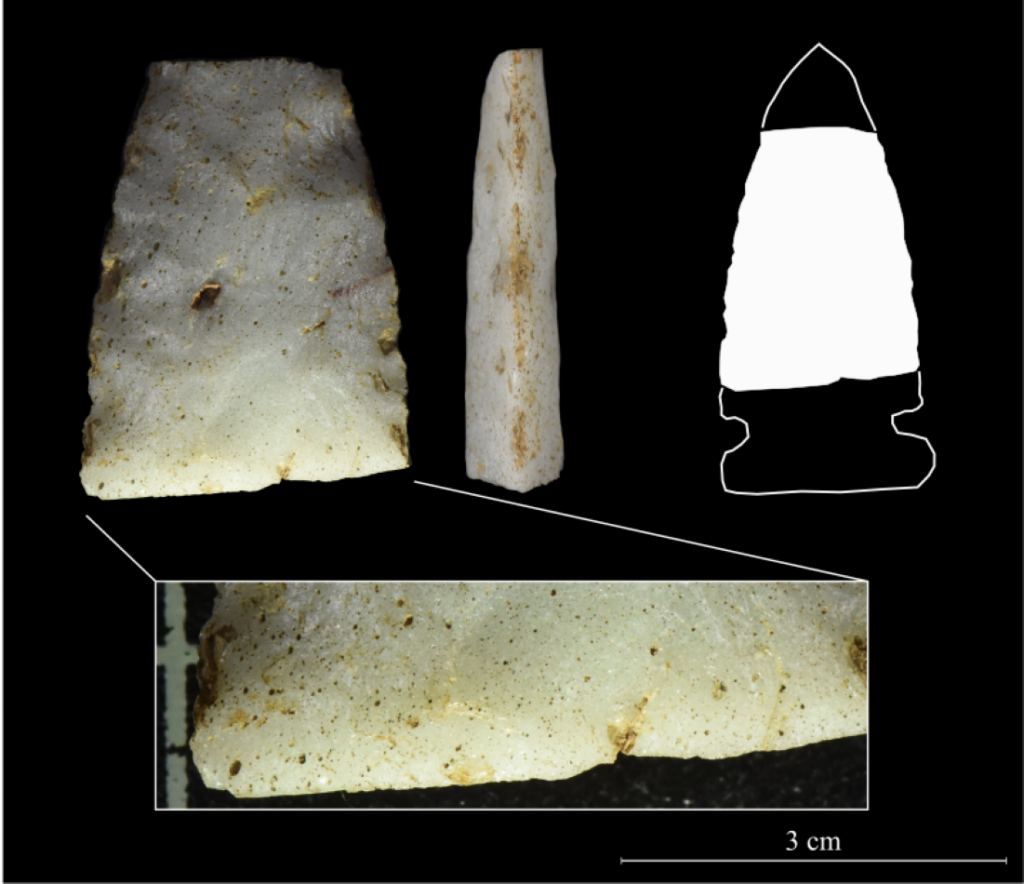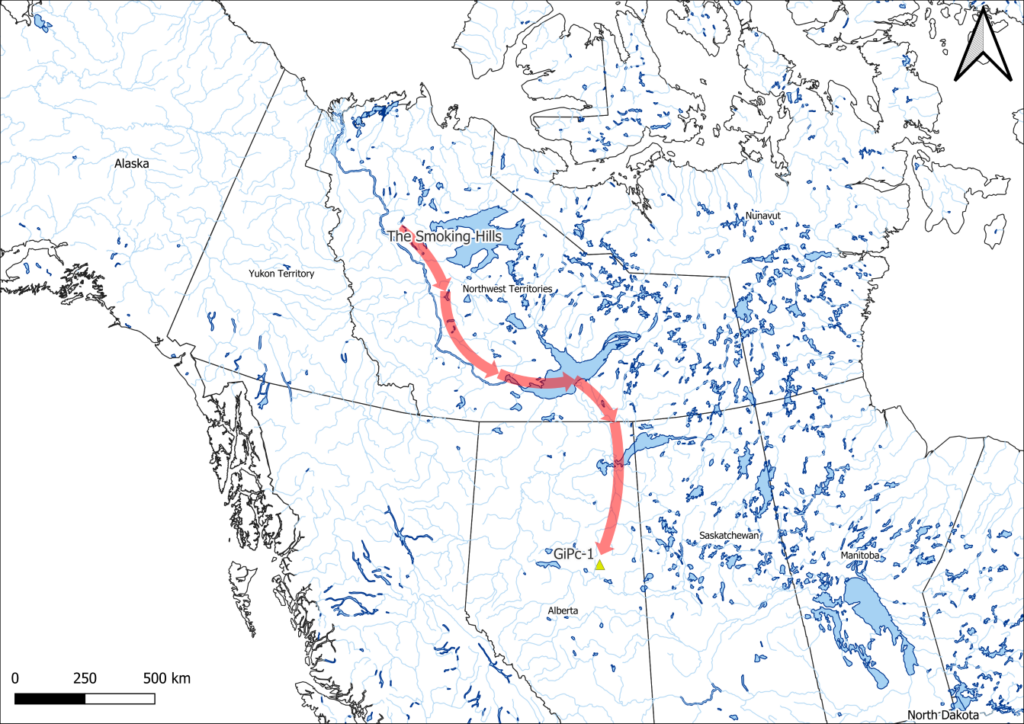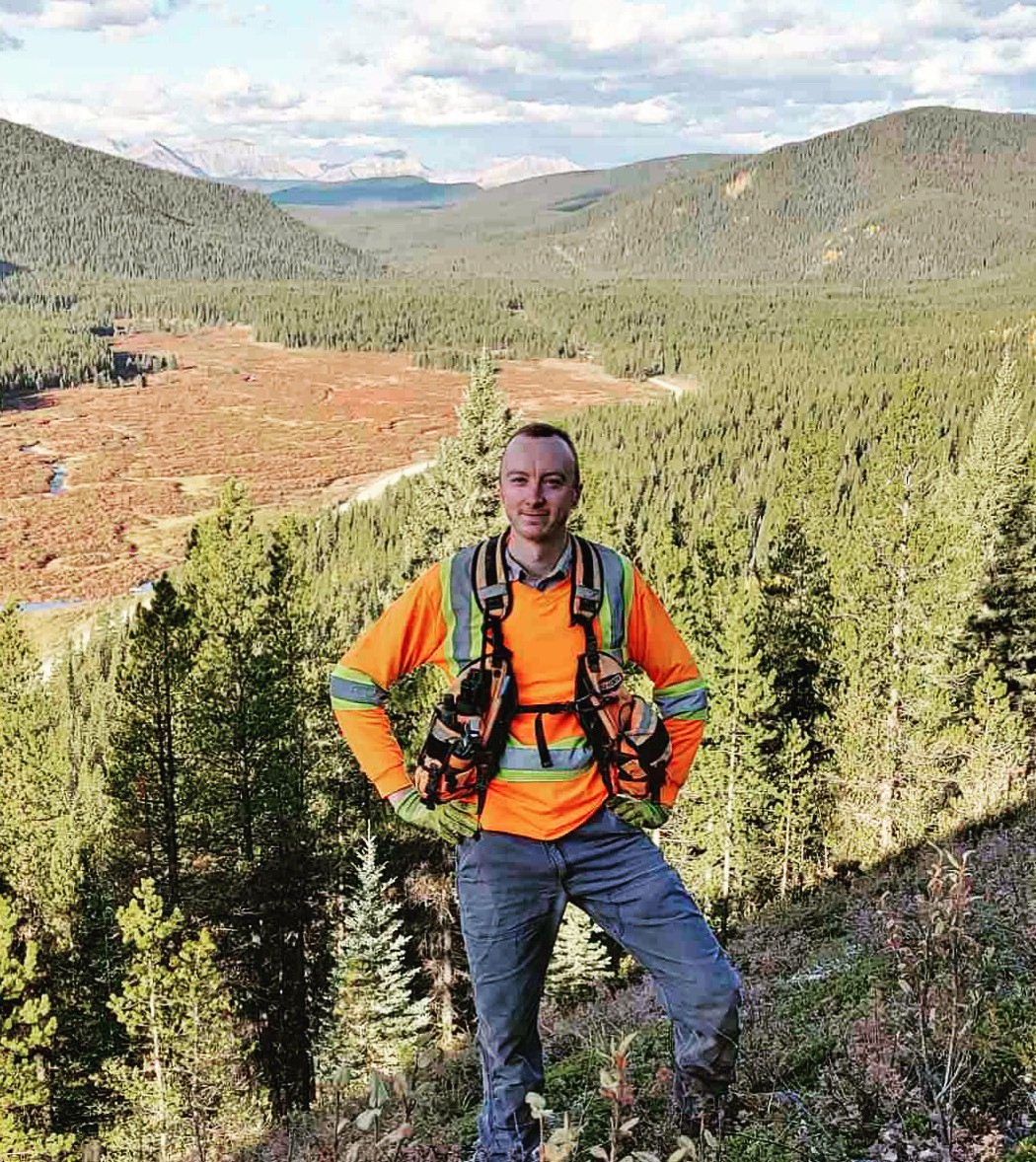Post Category : Archaeotourism Glossary Special Finds
Finding Tertiary hills clinker in alberta
Needle in a haystack
Tertiary Hills Clinker is a natural rock that is formed when coal seams burn underground and melt the surrounding sediments. Lightening and forest fires can ignite exposed seams of coal, which burn hot enough to turn clay and sand into a near-glass like material that is suitable to make stone knives, arrowheads and other tools. These areas would burn underground nearly continuously for centuries, giving one location the name “The Smoking Hills” in Cape Bathurst, Northwest Territories. In Northwest Territories, several outcrops of clinker were utilized by ancient Indigenous peoples, occurring along the Makenzie River.

The Smoking Hills of Cape Bathurst, NWT. Retrieved from atlasobscura.com
Where did it come from?
Precontact indigenous peoples collected and used the clinker found at these locations to make stone tools, and these materials were traded far and wide to other groups whom they had connections with. In very rare occurrences, these materials made it all the way into northern and central Alberta. At the archaeological site GiPc-1, Near Calling Lake, Alberta, Ember Archaeologists found a broken projectile point that we thought could be Tertiary Hills Clinker. The artifact appeared to be made from a white to light grey glassy-like material with very small bubbles visible. We tested the artifact with a pXRF Analyzer and compared the results to other clinker finds. And…. It matched! The artifact from GiPc-1 was in fact from the Tertiary Hills Clinker source in the Northwest Territories.

What the artifact tells us
This artifact is an incredible find, and represents trade and transport of this material by ancient Indigenous peoples nearly 1,500 km! Interestingly, the route a person could take to the source could be completed almost entirely by water, following the Mackenzie, Peace, and Athabasca Rivers. These waterways acted like highways in ancient times. Ancient Indigenous people living within the modern boundaries of Alberta had many long distance trade connections, likely due to the different directions that the major rivers flow. The Peace and Athabasca River systems flow north, eventually spilling into the Arctic Ocean. Whereas the Saskatchewan River systems flow east, eventually reaching the Hudson Bay and the Milk River; which makes it all the way into the Gulf of Mexico via. the Mississippi River! In the archaeological record, we see trade goods from across the continent come to archaeological sites in Alberta, likely due (at least in part) to these river connections.

A rare find!
Tertiary Hills Clinker is incredibly rare in the Alberta archaeological record. To put things into perspective, there are about 40,000 archaeological sites in Alberta (wow!). Obsidian is considered very rare, and was also transported long distances from their point of origin. Furthermore, there are approximately 980 archaeological sites in Alberta that contain obsidian. In other words, you have about a 2% chance of finding obsidian. Tertiary Hills Clinker has only been found in 20 archaeological sites in Alberta, making that chance of finding it.. 0.05%. Very rare indeed.

Timothy Allan
Project Archaeologist
Timothy Allan is a Project Archaeologist with Ember Archaeology. He has permit status in Alberta, and is able to manage projects in the Boreal, Parkland, and Eastern Slopes regions. Timothy also has experience in survey and small excavation projects particularly in the Eastern Slopes. He worked as an archaeology field technician in northeastern British Columbia for two years before joining Ember Archaeology. Timothy’s primary role is in forestry survey, for clients near Sundre, Rocky Mountain House, Edson, and Fox Creek, Alberta. He has directed small crews for forestry projects, in both pre-impact and post-impact historic resource assessments. Timothy’s secondary role is directing additional analysis for archaeology projects, such as radiocarbon dating, and raw materials analysis.



